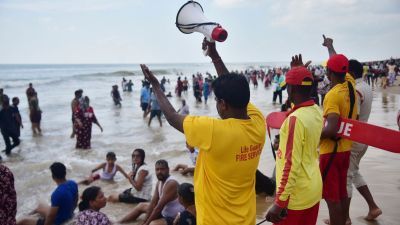With strokes, knowledge is a lifesaver
Until two months ago, Todd McGee, 34, was a healthy man in top physical condition — a builder, surfer and devoted father of a 15-month-old.

Until two months ago, Todd McGee, 34, was a healthy man in top physical condition — a builder, surfer and devoted father of a 15-month-old. The last person anyone would expect to have a stroke.
Yet a stroke has left him nearly unable to speak, with months, maybe years, of therapy ahead. Partly because of his age and partly because of the lack of a hospital with an MRI machine where he lives, no one recognized the symptoms of a stroke until it was too late to administer a treatment that could have limited the damage and speeded his recovery.
This treatment, with a drug called t-PA (for tissue plasminogen activator), can help dissolve a brain-damaging clot in the 80 per cent of victims who have strokes caused by them. But it must be administered within three hours of a stroke, and the sooner the better.
About only one stroke victim in five who could benefit from t-PA receives it, primarily because people don’t realize a stroke is happening and wait too long to get to the hospital.
Many Are at Risk
Knowing who is at risk of a stroke, recognizing the symptoms and getting prompt medical help can make a great difference in whether those afflicted live or die and, if they live, how severe the consequences will be. Although about 90 per cent of strokes occur in people over 55, they affect young adults, children and even babies.
In older adults, risk factors for stroke are nearly identical to those for heart attacks: uncontrolled high blood pressure, smoking, diabetes, high serum cholesterol and heart disease.
Dr Joseph Broderick, chairman of neurology at the University of Cincinnati Medical Center, said that in people under 50, trauma — often relatively minor trauma — to the carotid artery that feeds the brain is the main cause of stroke. Such trauma can occur as a result of a whiplash injury in a car accident, or leaning back over the sink in the beauty salon or getting chiropractic manipulation of the neck, he said.
Signs and Symptoms
Because a stroke injures the brain, the person who is having one may not realize it. And stroke symptoms sometimes come and go, leading the person to think nothing is seriously wrong. Thus, it may be up to family members or bystanders to take quick action in calling a doctor. In reviewing McGee’s symptoms, it is easy to see why he, his partner and hospital personnel missed the cause of the problems.
His first symptom was severe vomiting, which he thought was from the same “bug” that had afflicted his partner, Sue, and their daughter two days earlier. Then he got a headache, and not just any headache — “by far the very worst headache in my life,” he told Sue, who said he yelped at every bump in the road on the way to the hospital, where he was given an unrevealing CT scan and a potent painkiller and sent home.
Next, during a phone conversation, he began slurring his words, which he thought was a reaction to the medication. But soon after, the right side of his body went numb and he could not hold up his right arm. He went back to the hospital, where the staff suggested that the numbness might be related to the headache, but considered it serious enough to transfer him to a major medical center. Two days after the first signs of trouble, McGee’s problem was finally diagnosed as a major stroke, resulting from two clots caused by damage to the carotid artery, most likely from repeated trauma during surfing.
Unlike heart attacks, which can cause crushing chest pain or radiating pain that compels the victims to seek medical attention, strokes usually have more subtle symptoms. But according to the National Institute of Neurological Disorders and Stroke and the American Heart Association, stroke symptoms should be easy to recognize because they happen suddenly:
Dr Dawn Kleindorfer, Dr Broderick and colleagues at the Cincinnati medical center believe that a major stumbling block in getting a quick diagnosis and treatment for stroke lies in people’s inability to remember the symptoms. So they are teaching people, including children, who may recognize the symptoms in parents or grandparents, the signs of a stroke using the acronym FAST:
• Face weakness or numbness, droopy mouth or crooked smile.
• Arm or leg weakness or numbness
• Difficulty in understanding, speaking
• Time to call emergency
And time is of the essence. Ideally patients should get to the hospital within one hour to allow time for a diagnosis and treatment with t-PA in case of a clot-caused stroke.
Undiagnosed Warnings
In a study of 18,462 people published on October 9 in The Archives of Internal Medicine, Virginia J Howard, an epidemiologist at the University of Alabama at Birmingham and her collaborators found “a high prevalence of stroke symptoms” among people who had never received a diagnosis of stroke or its premonitory problem, a transient ischemic attack, which is a ministroke that leaves no lasting disability.
“These undiagnosed or unrecognized events could have a substantial impact on cognitive functioning or personality and could also be powerful harbingers of subsequent major strokes,” the researchers concluded. They recommended that head imaging studies be done for anyone found to have had a stroke symptom.
“People shouldn’t fear seeking medical attention, especially if they have a family history or risk factor for stroke,” Howard said. “Strokes are largely preventable. Even if it’s a false alarm, doctors would rather see the person. It could be some other neurological condition that needs attention.”






- 01
- 02
- 03
- 04
- 05

























